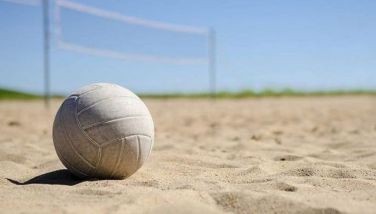Early sports specialization by youth troubling
We ended last week’s column by stating that Carl Stotz who founded Little League Baseball in Williamsport, Pennsylvania in 1939 ended up being kicked out of the league. According to Mike Hyman, author of “Until it Hurts: America’s Obsession with Youth Sports and How It Harms our Kids”, Stotz lost a power struggle with the corporate types he invited to help him manage the growing organization. He was ousted from Little League in 1956, 17 years after he founded the league meant to promote sportsmanship and fun in youth sports.
He stayed in Williamsport until his death in 1992 but never attended another Little League game. Hyman says that the reason for the messy split was Stotz’s alarm with Little League’s distressingly big ambitions. For the last four decades of his life, he railed about in print any chance he got, which was often.
Hyman writes that in 1964, the Los Angeles Times published a four-part series on the growing pains of Little League Baseball (LLB), probing everything from dysfunctional parents to the alarming incidence of pitcher’s elbow. The provocative stories, several of which ran on page one, caused a stir, says Hyman. The most incendiary article in the series was one that featured Stotz, eight years after his ouster and as angry as ever, claims Hyman.
One other athlete who joined the dissenters, skeptics and critics of Little League was Joey Jay, a Little Leaguer who graduated to the major leagues in 1953. Jay had led the Cincinnati Reds to the 1961 National League championship. In 1965, narrates Hyman, Jay was a 29-year old husband and father living in a Cincinnati suburb.
He signed up his seven-year-old son to play in a Cincinnati Little League and was surprised to find neither his wife nor child happy. Jay said his wife kept complaining that Stephan was coming home tense and exhausted. He went to one game and watched angrily while the coach made a tired six-year old who just couldn’t get the ball over the plate go back to the mound and keep pitching until he was ready to collapse.
Hyman continues to say that Jay wasn’t angry only about his son’s experience. In 1966, True magazine published his article, ”Don’t Trap Your Son in Little League Madness,” which decried the state of LLB everywhere. The article was part commentary, part diatribe. It challenged the qualifications of coaches and the motives of parents. It questioned the health effects of Little League on young bodies.
As Jay saw it, emphasizes Hyman, kids were far better off learning and enjoying sports on their own than being under the thumb of adult minders. “What happens today is that many Little Leaguers are burned out before maturity…The fault lies in its concentration on immediate victories and premature glory, rather than on teaching basic skills and sound development…Championships seem to come first, the youngsters last.”
Adding his voice to the debate was New York University (NYU) professor Charles Bucher. He was, as described by Hyman, a tall, trim professor in NYU’s School of Education, a delegate to President (Dwight) Eisenhower’s White House Conference on Physical Fitness and a deep thinker about early childhood development. He had studied the issue from numerous angles, having also been an elementary school coach and athletic director. His entry into the debate was triggered by an article in the New York Times on September 1, 1952 which congratulated the Little League World Series champion team from Norwalk, Connecticut. The Times wrote that “the Little Leagues has become a fixture in American life – and a valuable on indeed.”
Bucher disagreed. Hyman said that Bucher, in his response to the article, listed reason after reason why parents should be wary of LLB. To him, the entire enterprise was designed to please and entertain adults. Little about it struck him as right for adolescent boys.
The idea that boys would concentrate on one sport also troubled Bucher. He wrote, “The period eight to 12 years of age should be an exploratory period when youth should be playing many activities… This is not the time to specialize too intensively in one activity. The child at his age needs experiences which involve the whole body.”
Hyman continues to share his insights on the excesses of youth sports by quoting a booklet titled “Desirable Athletic Competitions for Children” of the National Education Association (NEA). Founded in 1857, the influential NEA’s 3.2 million members include elementary and secondary teachers, higher education faculty, and school administrators. In its report, which took three years to complete, the NEA concluded that highly organized competition, patterned after high school and college sports, gives youngsters an exaggerated idea of the importance of sports and may even be harmful to them.”
- Latest
- Trending



























